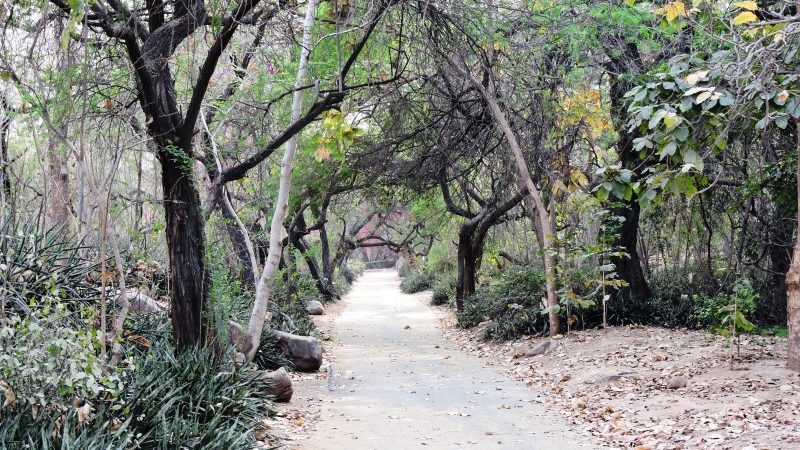Lodhi Gardens
Delhi city is a home for 15 million people and yet it only provided adequate housing for less than 20% of this figure. The rest live in slums and in jhuggi-jhomparis. The clean drinking water demand of the city is 3,324 MGD but it gets only 2,034 MGD of water. Even when 80% of the total water consumed goes out as sewage, the city has a treatment capacity of only 512.4 MGD. Delhi gets an average of 240 litres per capita per day of safe drinking water. Wells are drying up and you have to dig deeper to access them. The city produces 4000 tons of solid waste (garbage) that is currently managed by MCD centrally collected and disposed off in sanitary land fill sites. Of these , 32% is compost matter. Thus the story of Delhi is that of unclean streets, untreated water and accumulating garbage.

Backwaters of…Lodhi Gardens
Delhi also houses Lodhi Tombs constructed in 1554 and now surrounded by beautifully planned gardens and restored and declared as archaeological monuments. Lodhi Gardens, also in the city – clean jogging paths and lawns to exercise or to play, flowers in full bloom and lovely bright Rose Garden, it has clean pathways for walking, lots of trees, well maintained lawns and flower beds, a pond and a listing of all the birds that are housed by it. It has water harvesting structures that would provide clean drinking water if needed, garbage pits for vermiculture – to take care of localised solid waste management that is sustainable in the long run which in turn supports lovely flower beds and future vegetable gardens if needed. It is self sustaining and self sufficient, it is what is possible if we choose to make it possible.
For me it is an ‘ideal garden’ that represents, what is possible for our city to become. It stands for the future, the possibility of a self sustaining city. Hence it is important to me. I can quite easily visualise each garden as the nucleus of the catchment settlement that it services. I can visualise many such localised self contained gardens serving as nucleus for their neighbourhoods, joining together, to form the city similar to cells in a living body. Each has water harvesting structures that would provide clean drinking water; garbage pits for vermiculture to take care of localised solid waste management, and in turn supports lovely flower bed and future vegetable gardens. It is a commitment to preserving our past, as a reminder of what is possible if we come together.



